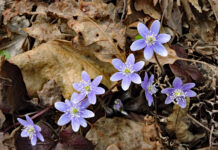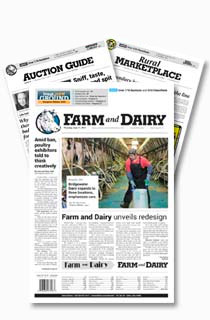Temperatures are beginning to trend in a direction that gets us excited about the spring forage green up. As soil temperatures gradually raise, pastures and hay meadows will start waking up to initiate new growth after their winter dormancy.
Although you may be excited to open the gates to allow your livestock access to the first spring growth, early season management is important to maintain a healthy forage stand throughout the growing season and into the next. Many of our growing areas experienced challenging weather conditions that prevented our forages from storing the reserves they needed last fall. Stressing grasses too early in the spring can prevent further stand recovery and limit production potential in 2025.
Phosphorus and potassium
Forages are a crop that need adequate soil fertility to perform just like any other commercial crop you grow. The Tri-State Fertilizer Recommendation Guide (OSU Extension Bulletin 974) provides soil fertility recommendations for a number of crops. The minimal soil test values for grass species are 20-40 ppm for phosphorus and 100-170 ppm for potassium, depending on soil type. For pure stands of alfalfa, the minimum soil test values for phosphorus are 30-50 ppm and 100-170 ppm for potassium. If you have a mixed grass-legume stand, your legumes will have higher P and K requirements than the grasses, and there may be a need to push the lower end of baseline soil fertility values to a median value of at least 25 ppm phosphorus. Trying to answer the questions of when to fertilize and how much to apply may vary slightly depending on your management style.
If you harvest your forages as hay, you can expect to remove up to 13 pounds of P2O5 and 50 pounds of potash for every ton of hay harvested. Rotational grazing returns the bulk of the nutrients back in the form of urine and feces, as ruminant digestion is an inefficient process. It is estimated that 80% of the nutrients an animal consumes will be returned to the soil. The intensity of your grazing management will determine how uniform those nutrients are deposited back to your fields. An intensive grazing system can achieve 70%, or greater, forage utilization where continuous stocking may only utilize 40% of the available forage. The amount of fertilizer or additional manure that you need to apply to maintain phosphorus and potassium soil test values will be dependent on your soil test results and estimated crop removal rates.
Nitrogen
Nitrogen is a different story from phosphorus and potassium. Annual nitrogen applications will probably be necessary, but the amount will vary depending on your management style and your forage stand composition. The legume in a grass-legume stand will provide nitrogen to the grasses. If your stand consists of less than 20% legume, it is recommended that you supplement your fertility with 100-180 pounds of nitrogen per acre. If your stand is 20-35% legumes you will need 50-130 pounds of N, and if your stand is 35% legumes or more you should not need added nitrogen.
Timing of nutrient applications can help with your forage management plan and soften the large production swings we see throughout the season. The spring green up will bring its own flush of cool season grass growth, and some will question the need to make a spring application at all. If soil test results show satisfactory levels of P and K, applications are not warranted. If you are below the recommended soil test values, be careful not to over fertilize in the spring. Grasses will continue to up take available potassium, and over fertilization in the spring can result in metabolic issues for your livestock. It is best to reserve phosphorus and potassium applications until the fall to help the plant prepare for winter dormancy.
A spring nitrogen application is beneficial if performed on a select portion of your total acreage. It is recommended that you split your nitrogen applications out throughout the season. Choose those acres you can effectively graze in April and apply one quarter to one third of your yearly per acre nitrogen needs at green up. The other applications can be made in early summer to assist with the summer slump, and the final application in late summer/early fall to promote late season production or to prepare for stockpiled forages.
Finally, resist the urge to turn your livestock out to graze until your forages have gotten off to a good start. This is especially true if you were in an area impacted by last year’s drought. The plants may not have had time to build any root reserves to get them started off this spring. If stressed early, there could be continued stand declines. It will be hard for some to wait any longer than they have to. Patience now will give your stands a better opportunity to continue to recover and meet your livestock’s forage needs throughout this growing season and into the next.
Resources
Ohio State University Extension has recently released a number of new fact sheets. These cover subjects on teff, grazing intensity, and a guide to pasture improvement. You can view and print these publications from the OSU Extension Forage Team website at forages.osu.edu. The OSU Forage Team will also be hosting a three-part Forage Resiliency Webinar Series, which began on March 4. You can register for this program at go.osu.edu/1forageweb2025.
There are also two sessions remaining for the OSU Beef Team’s “2025: High Cattle Prices and Drought Recovery” webinar series. The two remaining virtual meetings will be held on March 26 and April 30. You can register for the program at https://go.osu.edu/beefschool25.













